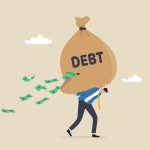
Introduction
Debt is a common financial reality for many Canadians, and understanding the different types of debt can help individuals make informed decisions about their finances. In this comprehensive and engaging FAQ blog, we will explore various types of debt that Canadians may encounter, providing valuable insights and practical information. From mortgages to student loans, credit card debt to car loans, we will delve into each type, discussing key aspects, benefits, and considerations.
Understanding Debt
Debt, in its simplest terms, is the borrowed money that individuals or businesses are legally bound to repay within a predetermined timeframe. However, the world of debt is far from simple, encompassing a diverse range of financial arrangements with varying terms, interest rates, and repayment schedules. In order to shed light on this intricate topic, we will embark on a comprehensive exploration of the different types of debt that hold significance for Canadians. By delving into the nuances of each debt category, we aim to equip readers with a deeper understanding of the complexities surrounding debt management and financial decision-making in Canada.
Mortgage Loans
Mortgage loans are the most common form of debt for Canadians who are purchasing a home. This long-term loan allows individuals to borrow a significant amount of money to finance their property purchase. Mortgages usually have a fixed or variable interest rate and require regular monthly payments over an extended period. It’s crucial to consider factors such as down payment requirements, interest rates, and mortgage terms before committing to a mortgage loan.
Student Loans
Student loans are designed to help Canadian students finance their education. These loans can be obtained from the government or private lenders. Student loans often have lower interest rates compared to other types of debt. They typically offer a grace period, allowing students sometime after graduation before they need to start repaying the loan. Understanding the terms, repayment options, and available government assistance programs is vital when considering student loans.
Credit Card Debt
Credit card debt is a common form of short-term borrowing that can quickly accumulate if not managed properly. Credit cards allow users to make purchases and borrow money up to a predetermined credit limit. However, it’s essential to use credit cards responsibly and pay off the balance in full each month to avoid high-interest charges. Understanding interest rates, credit card rewards, and fees associated with late payments is crucial to maintaining healthy financial habits.
Car Loans
Car loans are taken out by individuals who want to purchase a vehicle but cannot afford to pay the full amount upfront. These loans often have fixed interest rates and require regular monthly payments over a specified period. It’s essential to consider factors such as the down payment, loan term, interest rate, and the total cost of the loan when financing a car purchase. Evaluating your budget and comparing different loan options can help you make an informed decision.
Personal Loans
Personal loans are versatile loans that can be used for various purposes, such as home renovations, medical expenses, or debt consolidation. These loans can be obtained from banks, credit unions, or online lenders. Interest rates, loan terms, and repayment options may vary, so it’s crucial to compare offers from different lenders. Understanding the total cost of borrowing, any associated fees, and the impact on your credit score is vital when considering a personal loan.
Line of Credit
Line of credit is a revolving form of credit that allows individuals to access funds as needed, up to a predetermined limit. It provides flexibility and convenience, enabling borrowers to manage their finances more effectively. Interest is only charged on the amount borrowed, and repayment can be made in full or in installments. Understanding the terms, interest rates, and repayment options of a line of credit is crucial to using it responsibly and avoiding excessive debt.
Payday Loans
Payday loans are short-term, high-interest loans that are intended to provide individuals with quick access to cash until their next paycheck. These loans are typically small in amount and require repayment within a short period, usually on the borrower’s next payday. Payday loans often come with high fees and interest rates, making them an expensive borrowing option. It’s important to explore alternatives and consider the potential long-term consequences before opting for a payday loan.
Debt Consolidation
Debt consolidation involves combining multiple debts into a single loan, often with a lower interest rate and more manageable repayment terms. This strategy can help Canadians simplify their finances and potentially reduce their overall debt burden. It’s crucial to carefully evaluate the terms, fees, and impact on your credit score before pursuing debt consolidation. Seeking professional advice from credit counselors or financial experts can provide valuable guidance in this process.
Business Loans
Business loans are specifically designed to provide financial support to entrepreneurs and businesses. These loans can be used for various purposes, such as startup capital, expansion plans, or purchasing equipment. Business loans may have different eligibility criteria, interest rates, and repayment terms. It’s important for Canadian entrepreneurs to thoroughly research and understand their business loan options, including government-backed loan programs, to make informed decisions for their ventures.
Medical Debt
Medical debt can arise when individuals incur expenses related to healthcare services not covered by insurance. Canadians may face medical debt due to prescription medications, dental procedures, or other medical treatments. Understanding payment options, negotiating bills, and exploring financial assistance programs provided by hospitals or government agencies is crucial when dealing with medical debt. Prioritizing health insurance coverage and maintaining an emergency fund can help mitigate the risk of accumulating medical debt.
Tax Debt
Tax debt occurs when individuals owe outstanding taxes to the Canada Revenue Agency (CRA). Unpaid taxes can result from late filings, errors, or unreported income. It’s important to address tax debt promptly to avoid penalties and interest charges. Canadians can explore payment arrangements, such as installment plans, and seek professional advice from tax experts or accountants to navigate tax debt effectively.
Consumer Proposal
Consumer proposals are formal agreements between individuals and their creditors to settle debt obligations. It is an alternative to declaring bankruptcy and can provide relief for Canadians who are overwhelmed by their debt load. A licensed insolvency trustee can help assess the situation and negotiate with creditors to create a manageable repayment plan. Understanding the implications, eligibility criteria, and long-term effects of a consumer proposal is crucial when considering this debt relief option.
Bankruptcy
Bankruptcy is a legal process that allows individuals or businesses to discharge their debts when they are unable to repay them. Bankruptcy provides a fresh financial start but comes with significant consequences, including the loss of assets and a negative impact on creditworthiness. It’s important to seek professional advice from a licensed insolvency trustee or bankruptcy lawyer before considering bankruptcy as a debt management option.
Conclusion
In conclusion, understanding the different types of debt that Canadians may encounter is essential for making informed financial decisions. From mortgage loans to credit card debt, student loans to personal loans, each type of debt has its unique characteristics and considerations. By understanding the terms, interest rates, repayment options, and potential risks associated with each type of debt, individuals can navigate their financial journey more effectively and make choices that align with their long-term goals.
FAQs
1. How can I manage credit card debt effectively? To manage credit card debt effectively, it’s important to pay off the balance in full each month, avoid unnecessary purchases, and negotiate lower interest rates with credit card issuers.
2. What are the advantages of debt consolidation? Debt consolidation can simplify your finances, potentially lower your interest rates, and provide a more structured repayment plan, making it easier to manage and pay off your debts.
3. Are there government programs to assist with student loan repayment? Yes, there are various government programs, such as the Repayment Assistance Plan (RAP) and the Canada Student Loan Forgiveness Program, that can help borrowers with student loan repayment based on their income and financial situation.
4. How can I avoid falling into payday loan debt cycles? To avoid falling into payday loan debt cycles, it’s important to budget effectively, build an emergency fund, and explore alternative borrowing options, such as personal loans from traditional lenders or borrowing from family and friends.
5. What are the potential consequences of bankruptcy? Bankruptcy can have significant consequences, including the loss of assets, a negative impact on credit scores, and limited access to credit in the future. It’s crucial to fully understand the implications before considering bankruptcy as a debt management option.
Additional Resources
Wealth Solutions Hub:
- Debt Repayment Strategy – Link
- Debt Consolidation Explained – Link
- Alternative Debt Consolidation Techniques –Link
Credit Counselling Canada – Link
CRA “Using a debt settlement company” – Link





